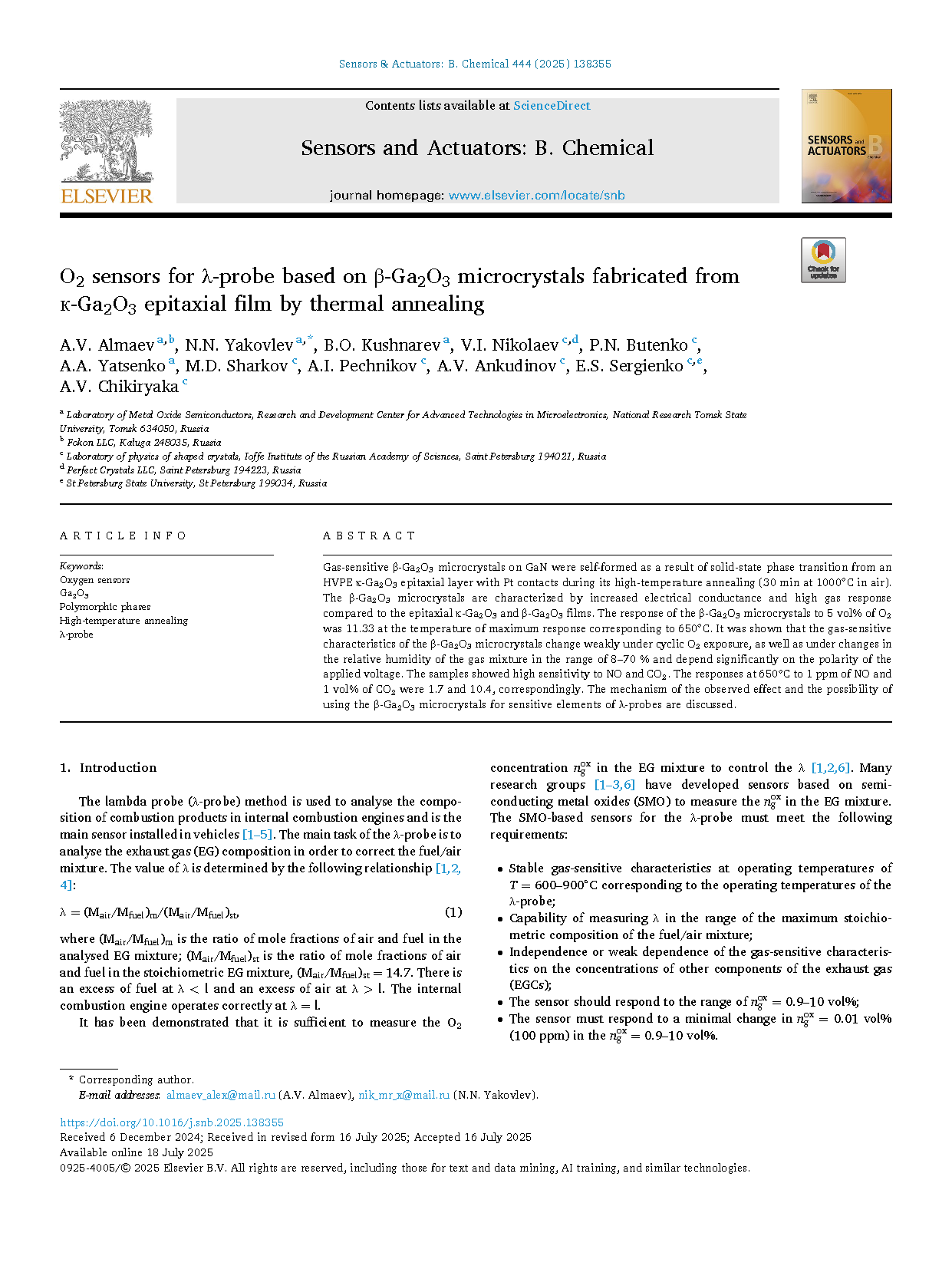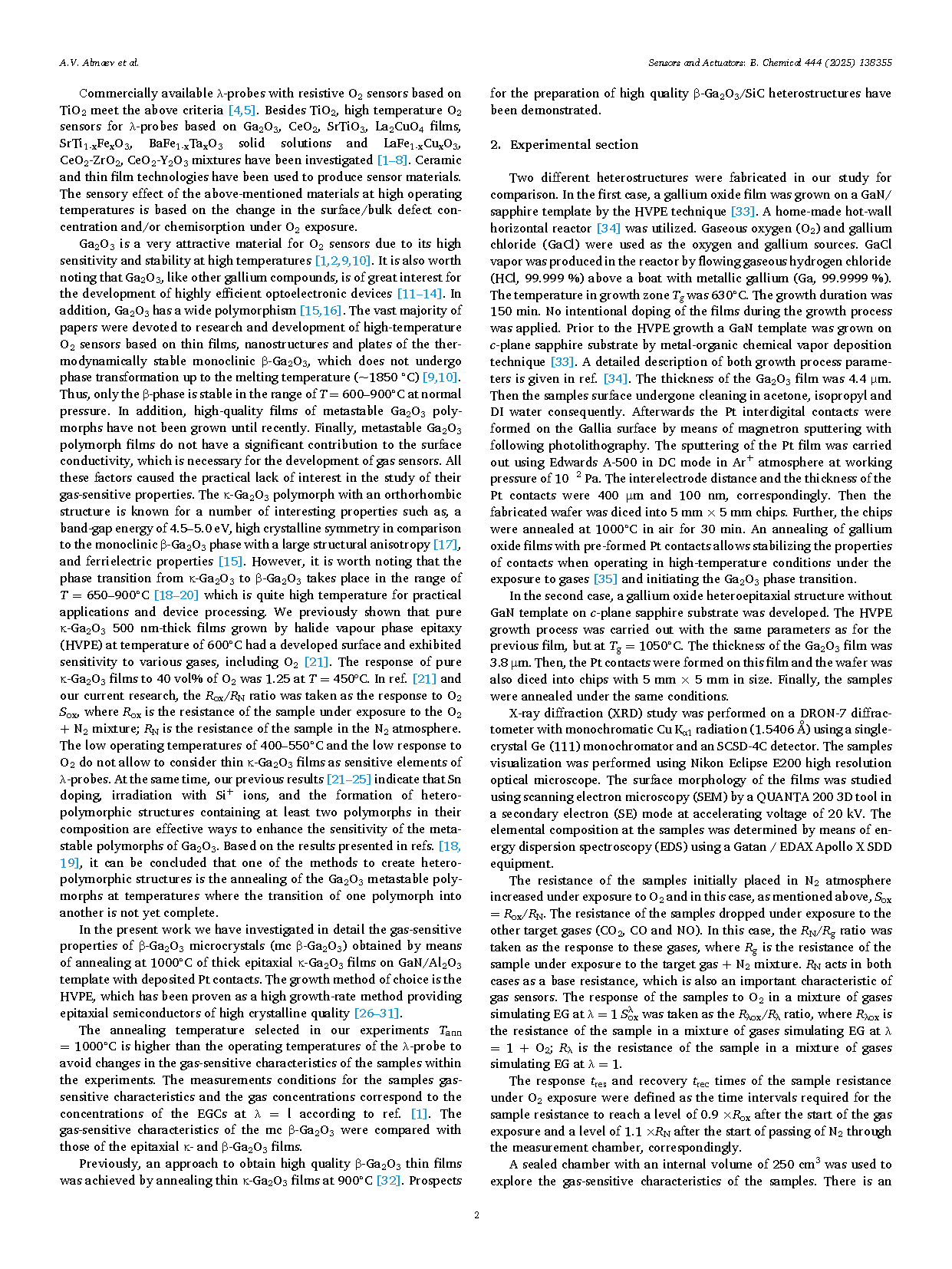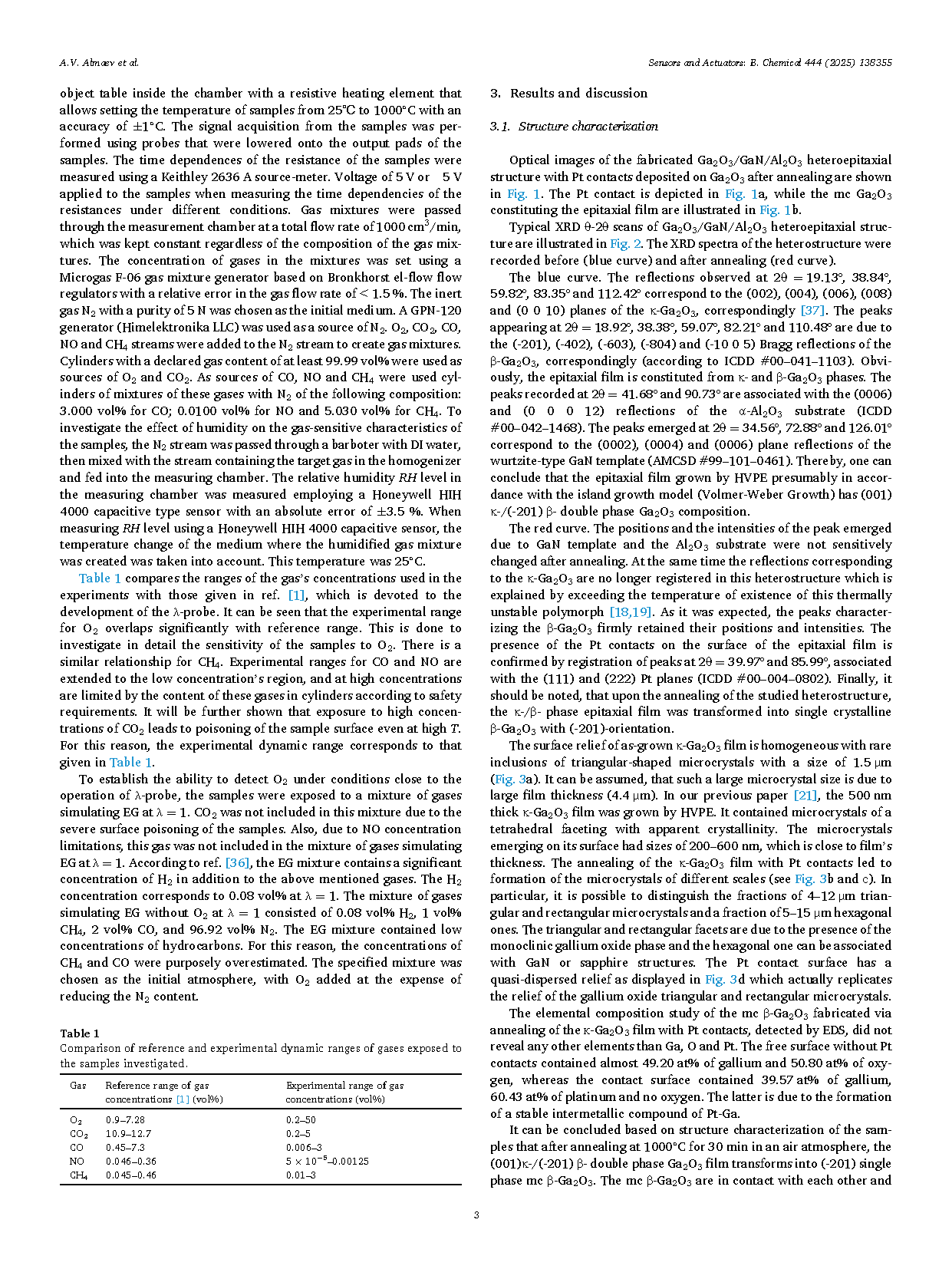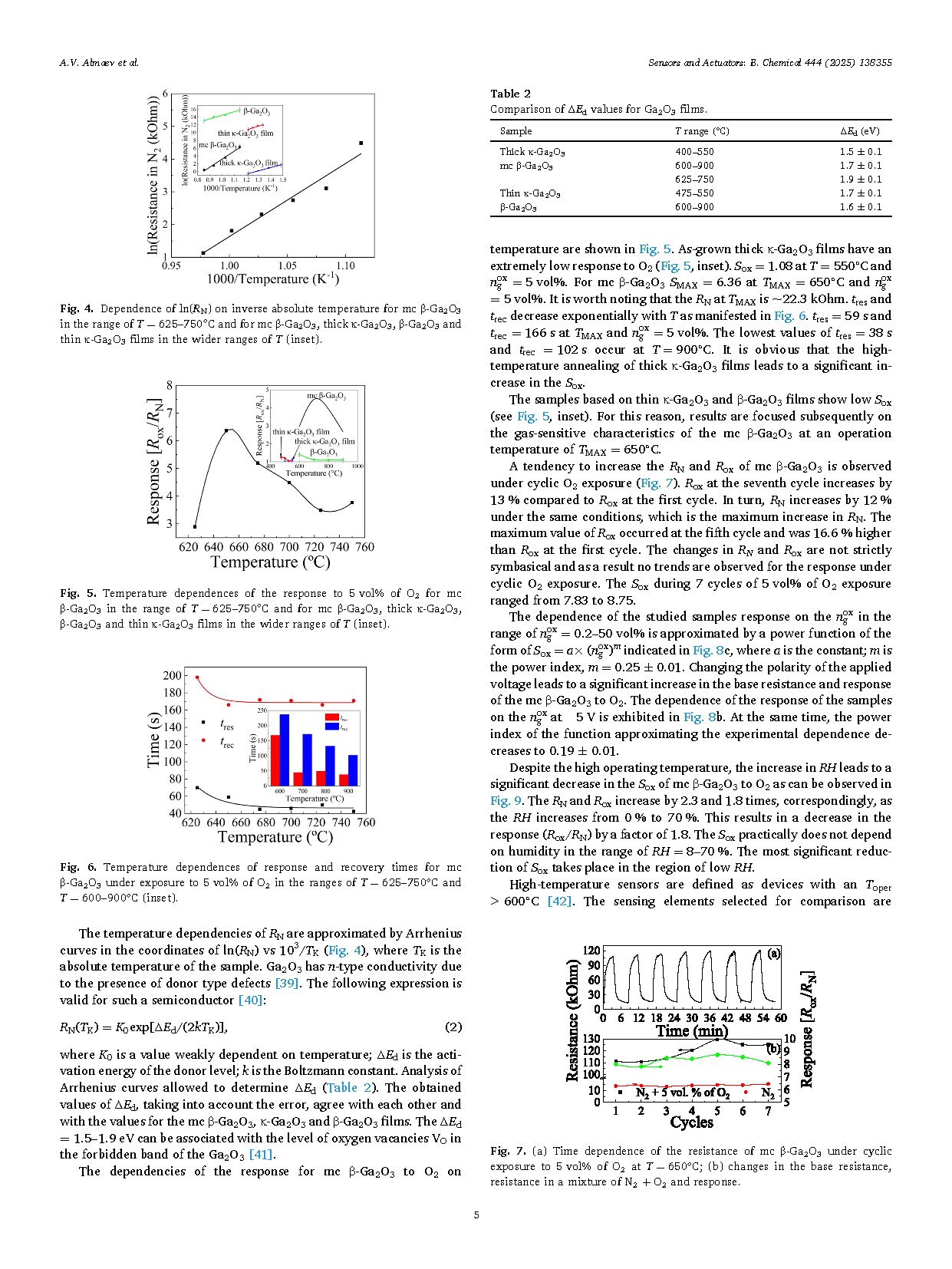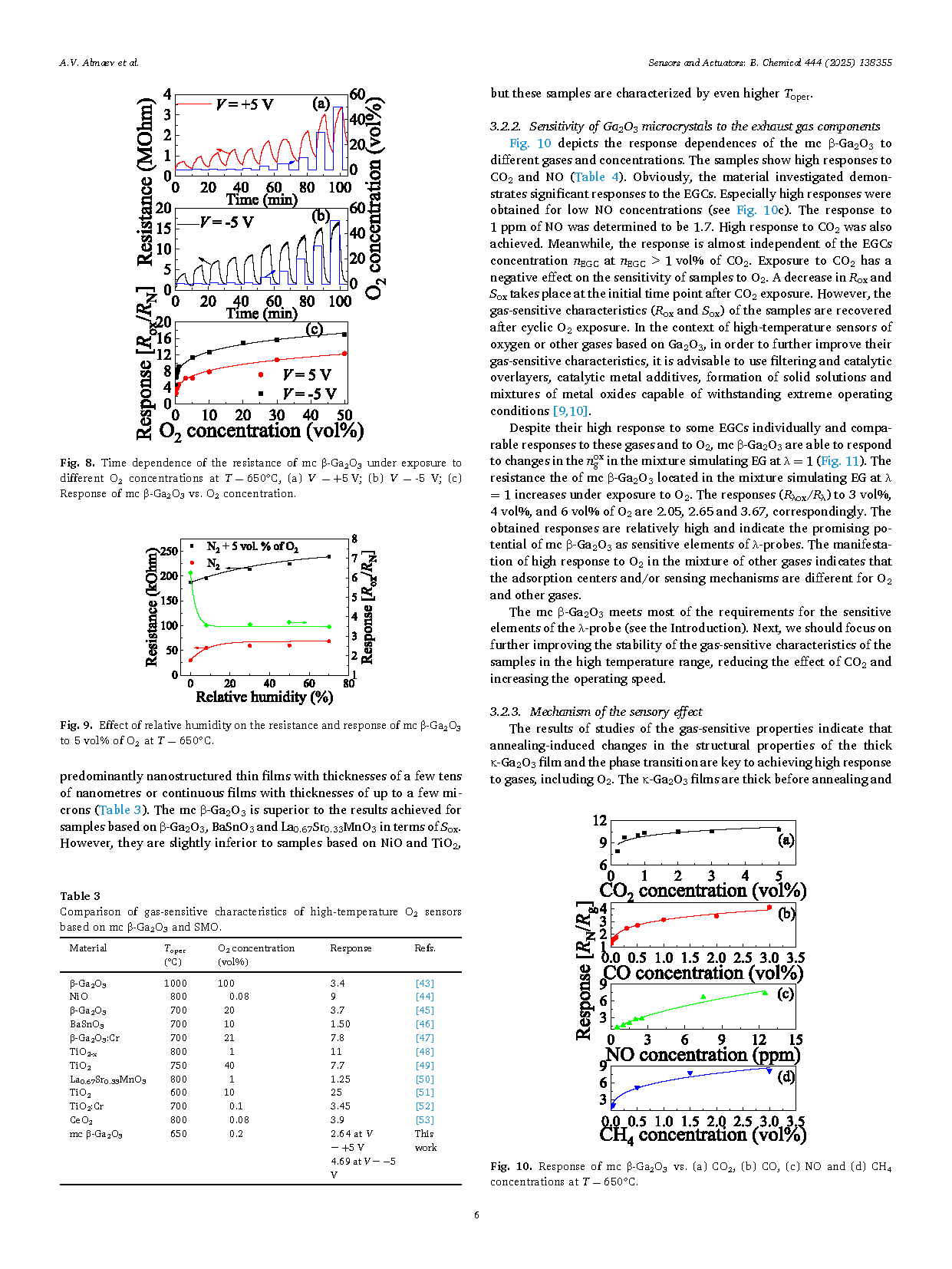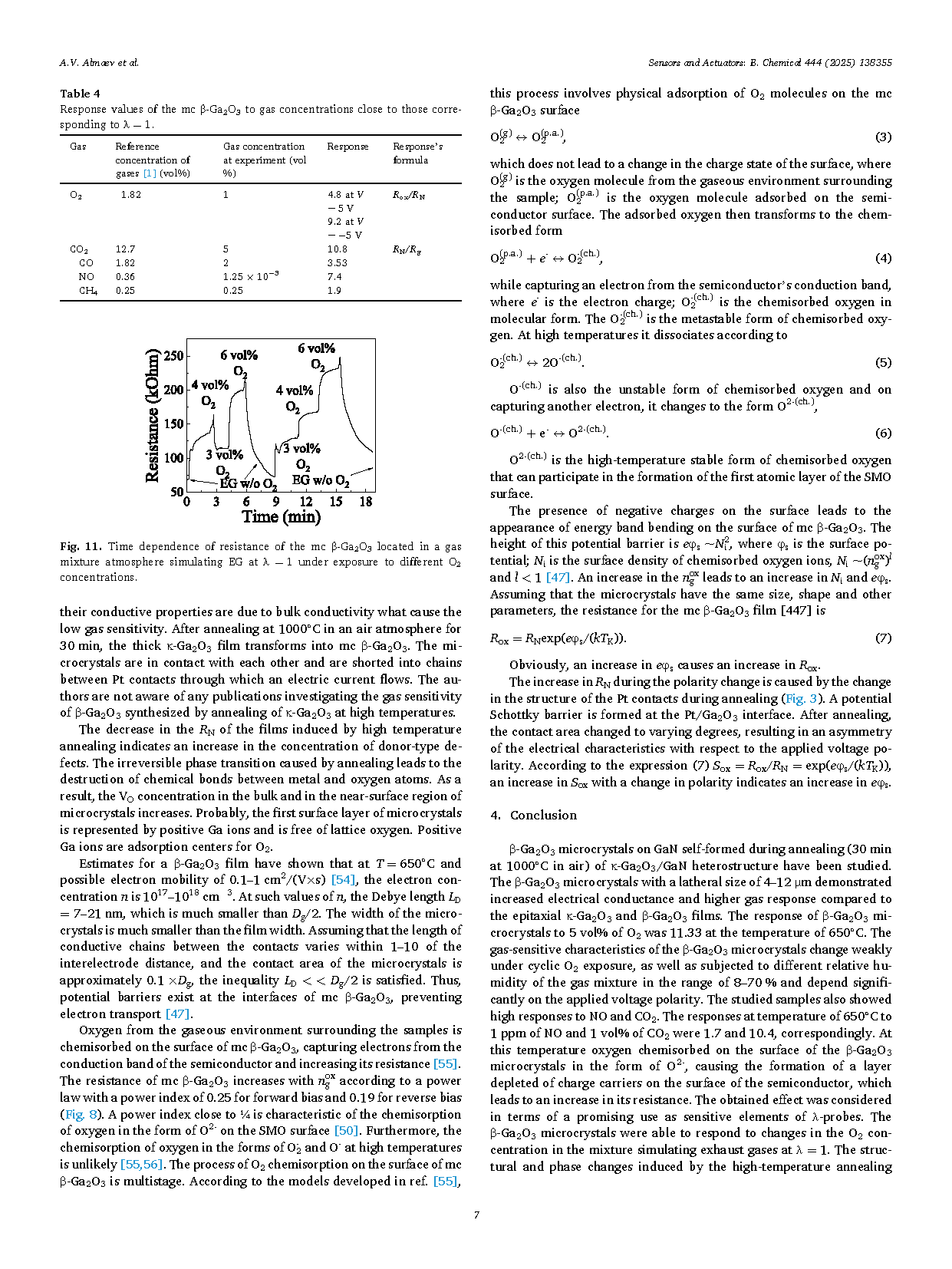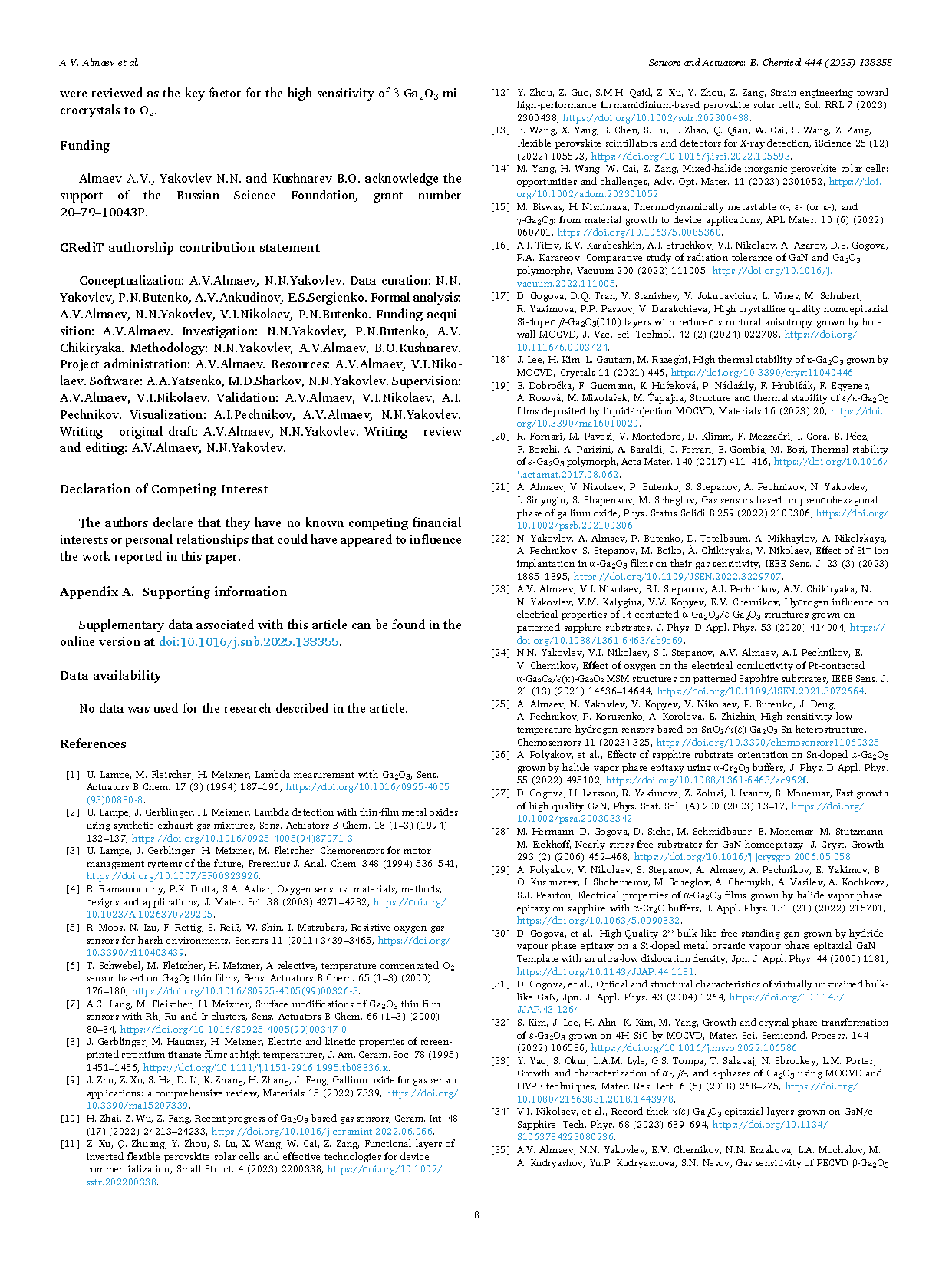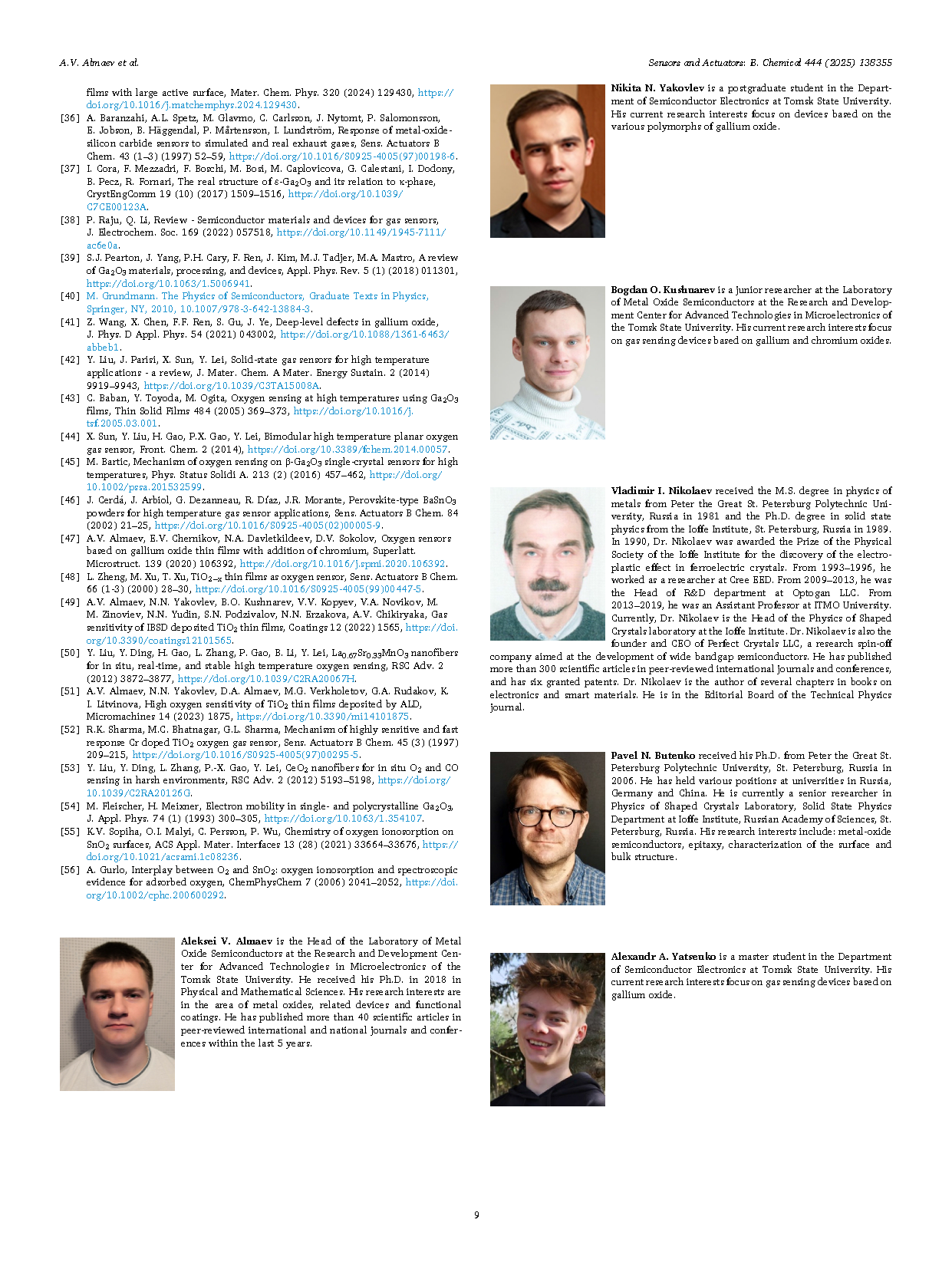
【International Papers】O₂ sensors for λ-probe based on β-Ga₂O₃ microcrystals fabricated from к-Ga₂O₃ epitaxial film by thermal annealing
日期:2025-09-26阅读:67
Researchers from the National Research Tomsk State University have published a dissertation titled " O2 sensors for λ-probe based on β-Ga2O3 microcrystals fabricated from к-Ga2O3 epitaxial film by thermal annealing " in Sensors and Actuators: B Chemical.
Author's Introduction

Aleksei V. Almaev is the Head of the Laboratory of Metal Oxide Semiconductors at the Research and Development Center for Advanced Technologies in Microelectronics of the Tomsk State University. He received his Ph.D. in 2018 in Physical and Mathematical Sciences. His research interests are in the area of metal oxides, related devices and functional coatings. He has published more than 40 scientific articles in peer-reviewed international and national journals and conferences within the last 5 years.
Article Introduction
The λ probe is used to analyse the composition of combustion gases mixture in internal combustion engines. It has been demonstrated that it is sufficient to measure the O2 concentration in the mixture to control the λ. Many research groups have developed sensors based on semiconducting metal oxides to measure the O2 concentration in the exhaust gases mixture. The SMO-based sensors for the λ-probe must meet the requirements of λ-probe operation, high operating temperatures of 600–900 °C and effect of composition of exhaust gases mixture.
Monoclinic β-Ga2O3 is a very attractive material for high-temperature O2 sensors due to its high sensitivity and stability. Metastability of other Ga2O3 polymorph films causes the practical lack of interest in the study of their gas-sensitive properties. We previously shown that pure κ-Ga2O3 500 nm-thick films grown by halide vapour phase epitaxy had a developed surface and exhibited sensitivity to various gases, including O2. However, the low operating temperatures of 400–550 °C and the low response to O2 do not allow to consider κ-Ga2O3 films as sensitive elements of λ-probes. At the same time, our previous results indicate that the formation of heteropolymorphic structures containing at least two polymorphs in their composition are effective ways to enhance the sensitivity of the metastable polymorphs of Ga2O3. It can be concluded that one of the methods to create heteropolymorphic structures is the annealing of the Ga2O3 metastable polymorphs at conditions when the transition of one polymorph into another is not yet complete.
In the this work we have investigated in detail the gas-sensitive properties of β-Ga2O3 microcrystals obtained by means of annealing at 1000°C of thick epitaxial κ-Ga2O3 films on GaN/Al2O3 template with deposited Pt contacts. As the results of our researches it was shown, that β-Ga2O3 microcrystals on GaN self-formed during annealing (30 min at 1000°C in air) of κ-Ga2O3/GaN heterostructure. The β-Ga2O3 microcrystals with a latheral size of 4–12 µm demonstrated increased electrical conductance and higher gas response compared to the epitaxial κ-Ga2O3 and β-Ga2O3 films. The response of β-Ga2O3 microcrystals to 5 vol.% of O2 was 11.33 at the temperature of 650 °C. The gas-sensitive characteristics of the β-Ga2O3 microcrystals change weakly under cyclic O2 exposure, as well as subjected to different relative humidity of the gas mixture in the range of 8–70% and depend significantly on the applied voltage polarity. The studied samples also showed high responses to NO and CO2. The responses at temperature of 650°C to 1 ppm of NO and 1 vol% of CO2 were 1.7 and 10.4, correspondingly. At this temperature oxygen chemisorbed on the surface of the β-Ga2O3 microcrystals in the form of O2-, causing the formation of a layer depleted of charge carriers on the surface of the semiconductor, which leads to an increase in its resistance. The obtained effect was considered in terms of a promising use as sensitive elements of λ-probes. The β-Ga2O3 microcrystals were able to respond to changes in the O2 concentration in the mixture simulating exhaust gases at λ = 1. The structural and phase changes induced by the high-temperature annealing were reviewed as the key factors for the high sensitivity of β-Ga2O3 microcrystals to O2.
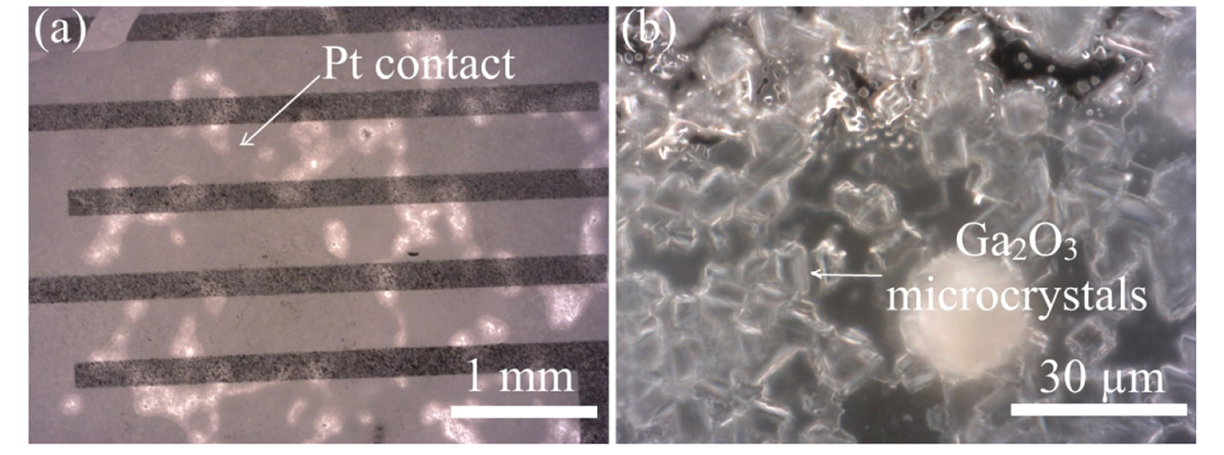
Fig. 1. The optical images of the Ga2O3/GaN/Al2O3 heteroepitaxial structure with Pt contacts deposited on Ga2O3 after annealing: (a) Pt contact; (b) mc Ga2O3.
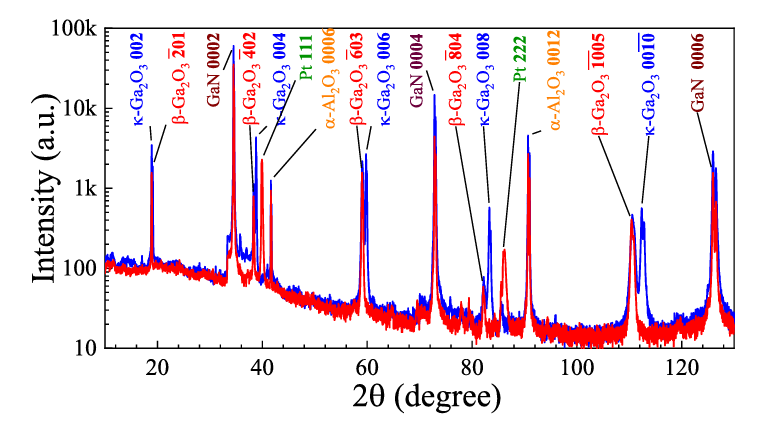
Fig. 2. XRD pattern of the Ga2O3/GaN/Al2O3 heteroepitaxial structure grown by HVPE at 630℃: as-grown (the blue curve); annealed at 30min@1000℃ on air (the red curve).

Fig. 3. (a) SEM plan-view images of the as-grown κ-Ga2O3 film; (b) the mc β-Ga2O3 fabricated from annealing of к-Ga2O3 film with Pt contacts included both regions (free surface/covered by Pt contact); (c) magnified image of the free surface region; (d) magnified image of the Pt contact region.
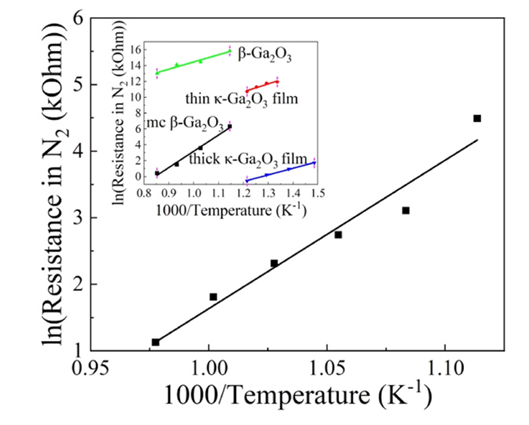
Fig. 4.Dependence of ln(RN) on inverse absolute temperature for mc β-Ga2O3 in the range of T=625–750◦C and for mc β-Ga2O3, thick κ-Ga2O3, β-Ga2O3 and thin κ-Ga2O3 films in the wider ranges of T (inset).
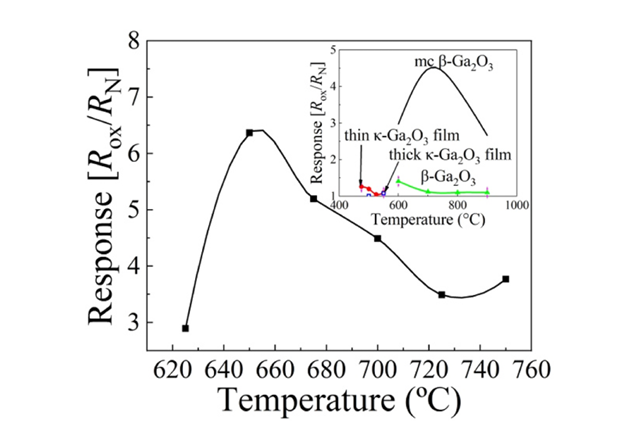
Fig. 5. Temperature dependences of the response to 5vol% of O2 for mc β-Ga2O3 in the range of T=625–750◦C and for mc β-Ga2O3, thick κ-Ga2O3, β-Ga2O3 and thin κ-Ga2O3 films in the wider ranges of T (inset).
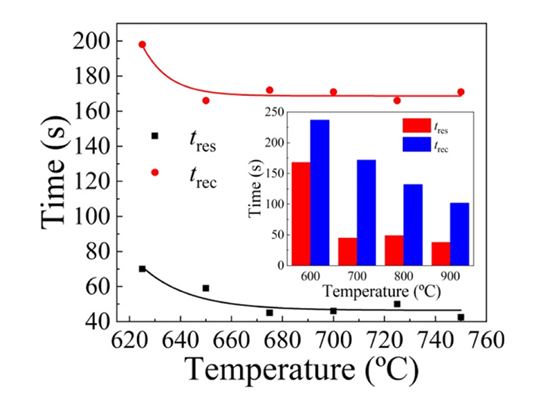
Fig. 6. Temperature dependences of response and recovery times for mc β-Ga2O3 under exposure to 5vol% of O2 in the ranges of T=625–750◦C and T=600–900◦C (inset).
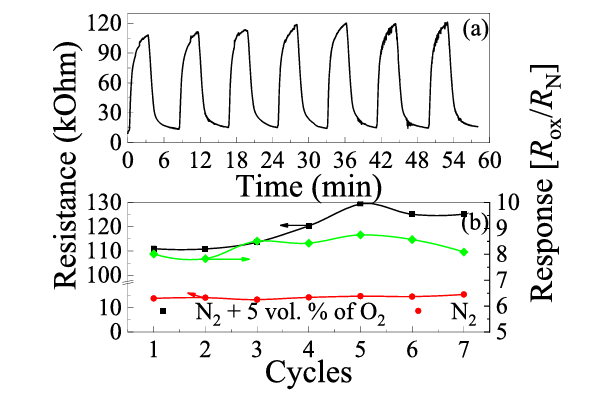
Fig. 7. (a) Time dependence of the resistance of mc β-Ga2O3 under cyclic exposure to 5vol% of O2 at T=650℃; (b) changes in the base resistance, resistance in a mixture of N2 +O2 and response.
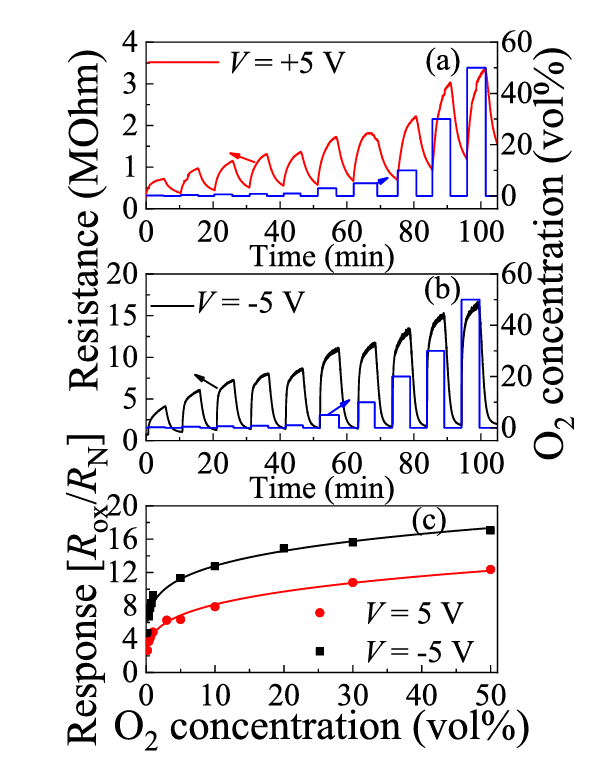
Fig. 8. Time dependence of the resistance of mc β-Ga2O3 under exposure to different O2 concentrations at T=650℃, (a) V =+5V; (b) V =-5 V; (c) Response of mc β-Ga2O3 vs. O2 concentration.
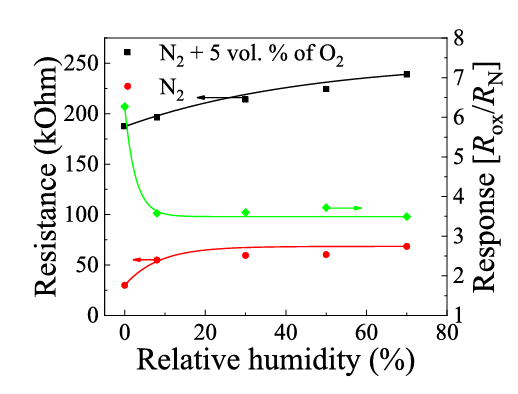
Fig. 9. Effect of relative humidity on the resistance and response of mc β-Ga2O3 to 5vol% of O2 at T=650℃.
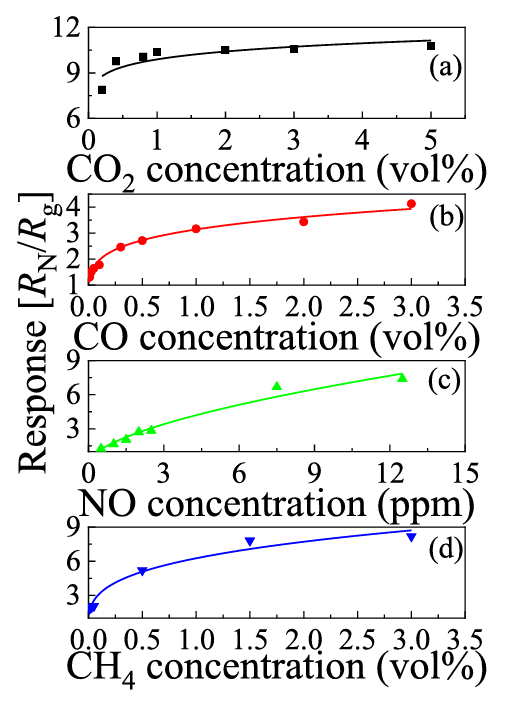
Fig. 10. Response of mc β-Ga2O3 vs. (a) CO2, (b) CO, (c) NO and (d) CH4 concentrations at T=650℃.
DOI:
doi.org/10.1016/j.snb.2025.138355
